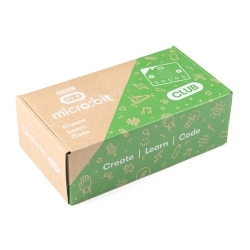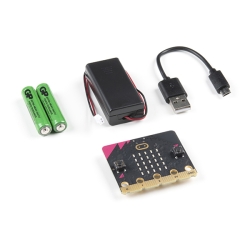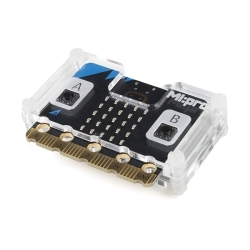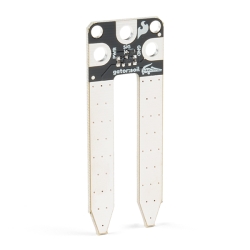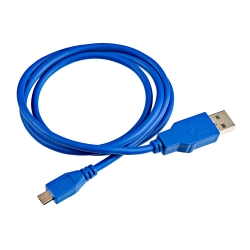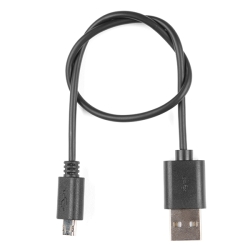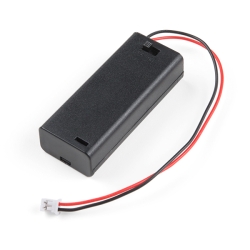micro:bit v2 Board
The BBC micro:bit v2 is a pocket-sized computer that has been updated with additional features that let you get creative with digital technology.
Helpful Documentation
Product Overview
The BBC micro:bit is a pocket-sized computer that lets you get creative with digital technology. Each order contains just the micro:bit board. You can code, customize and control your micro:bit from anywhere! You can use your micro:bit for all sorts of unique creations, from robots to musical instruments and more. At half the size of a credit card, you will be surprised at the amount of hardware each board is equipped with, including 25 red LED lights that can flash messages. There are two programmable buttons that can be used to control games or pause and skip songs on a playlist. The micro:bit can even detect motion and tell you which direction you’re heading. It can also use Bluetooth Low Energy (BLE) to interact with other devices and the Internet.
Taking a closer look at the front of the board, we can see the 5x5 LED array that you can use as a light sensor, a tiny screen to draw on, display words, numbers and other information, and the two programmable buttons! On the back of the board you will find the brains of the micro:bit, a 16MHz, 32-bit ARM Cortex-M0 microcontroller with 256KB Flash, 16KB RAM and a built-in temperature sensor. Additionally, the back of the micro:bit is populated by an accelerometer, compass and Bluetooth Smart antenna, as well as a microUSB and two-pin JST connector for different power options. Finally, at the bottom of the board you will find 20 gold-tabbed edge pins and five ring connectors (three for digital/analog I/O, two for power and ground) for hooking up external components. The tabs with larger holes can be easily used with alligator clips to prototype added components quickly.
Micro:bit has even supplied an intuitive mobile app that lets you send your code to your micro:bit over Bluetooth (without using a USB cable) and more. With this app you will be able to interact with your micro:bit on a higher level of accessibility.
Important: The micro:bit does not include any cables or power sources. This is just the board. We recommend picking up a micro:bit AA battery holder or a micro USB cable as well to power your board.
Features:
- 32-bit ARM Cortex-M0 CPU
- 256KB Flash
- 16KB RAM
- 5x5 Red LED Array
- Two Programmable Buttons
- Onboard Light, Compass, Accelerometer and Temp Sensors
- BLE Smart Antenna
- Three Digital/Analog Input/Output Rings
- Two Power Rings --- 3V and GND
- 20-pin Edge Connector
- MicroUSB Connector
- JST-PH Battery Connector (Not JST-XH)
- Reset Button with Status LED
Documents:
Features & Specs
- 64 MHz Arm Cortex-M4 with FPU
- 512KB Flash
- 128KB RAM
- 5x5 Red LED Array
- Two Programmable Buttons, one touch sensitive logo
- MEMS microphone and LED indicator
- Onboard Light, Compass, Accelerometer, Temp Sensors and Speaker
- 2.4 Ghz Micro:bit Radio/BLE 5.0 Smart Antenna
- 25-pin Edge Connector
- 4 dedicated GPIO, PWM, I2C, SPI, and ext. power
- Three Digital/Analog Input/Output Rings
- Two Power Rings --- 3V and GND
- Dedicated I2C bus for peripherals
- MicroUSB Connector (5V)
- JST-PH Battery Connector (Not JST-XH) (3V)
- Power/reset Button with Status LED
- 200 mA available for accessories
- Program with C++, MakeCode, Python, Scratch
Customer Reviews
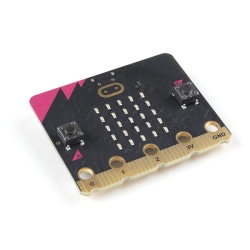


 Hookup Guide
Hookup Guide Schematic
Schematic Datasheet
Datasheet